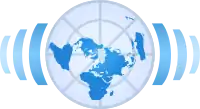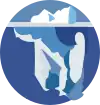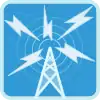Portal:Poland
Welcome to the Poland Portal — Witaj w Portalu o Polsce

Poland is a country in Central Europe, bordered by Germany to the west; the Czech Republic and Slovakia to the south; Ukraine, Belarus and Lithuania to the east; and the Baltic Sea and Russia's Kaliningrad Oblast to the north. It is an ancient nation whose history as a state began near the middle of the 10th century. Its golden age occurred in the 16th century when it united with the Grand Duchy of Lithuania to form the Polish–Lithuanian Commonwealth. During the following century, the strengthening of the gentry and internal disorders weakened the nation. In a series of agreements in the late 18th century, Russia, Prussia and Austria partitioned Poland amongst themselves. It regained independence as the Second Polish Republic in the aftermath of World War I only to lose it again when it was occupied by Nazi Germany and the Soviet Union in World War II. The nation lost over six million citizens in the war, following which it emerged as the communist Polish People's Republic under strong Soviet influence within the Eastern Bloc. A westward border shift followed by forced population transfers after the war turned a once multiethnic country into a mostly homogeneous nation state. Labor turmoil in 1980 led to the formation of the independent trade union called Solidarity (Solidarność) that over time became a political force which by 1990 had swept parliamentary elections and the presidency. A shock therapy program during the early 1990s enabled the country to transform its economy into one of the most robust in Central Europe. With its transformation to a democratic, market-oriented country completed, Poland joined NATO in 1999 and the European Union in 2004, but has experienced a constitutional crisis and democratic backsliding under the rule of the populist Law and Justice party since 2015.
From Polish history –

Selected image –

Did you know –

- ... that kiełbasa szynkowa (pictured) is a Polish ham sausage?
- ... that one of the reasons for the Partitions of Poland was the thousands of Russian peasants escaping from serfdom to the Polish–Lithuanian Commonwealth?
- ... that Zahava Burack survived the Holocaust by hiding in a crawlspace beneath the home of a sympathetic Polish family for two and a half years?
- ... that the toxic nature of the fools webcap was discovered only after 102 people in Bydgoszcz were poisoned in 1952?
- ... that The Old Axolotl, an experimental electronic novel by Jacek Dukaj presenting a post-apocalyptic, cyberpunk vision of Earth, incorporates hypertext and 3D-printable models of its characters?
You can help!
|
|
Selected biography –
.jpg.webp)
Selected location –

Poland now
Recent events

- On 21 February, President of the United States of America, Joe Biden (pictured), delivered a speech at the Royal Castle, Warsaw, ahead of the one year anniversary of the Russian invasion of Ukraine.
- On 12 December, Gen. Mirosław Hermaszewski, the only Polish cosmonaut to reach outer space, died at the age of 81.
- On 15 November, during a massive Russian shelling of targets throughout Ukraine, one missile fell on Polish territory, killing two people in Przewodów near the Ukrainian border.
- On 14 November, Jerzy Połomski, a popular actor and pop singer, died at the age of 89.
- On 3 October, Jerzy Urban, a scandalizing anti-clerical journalist who had served as press secretary for the Communist government in the 1980s, died at the age of 89.
Ongoing
Constitutional crisis • Belarus–EU border crisis • Ukrainian refugee crisis
Holidays and observances in April 2023
(statutory public holidays in bold)

- April Fool's Day, 1 April
- Easter (Easter eggs pictured), 9 April
- Easter Monday, 10 April
Subcategories
Topics
Related portals
| Germany | Czech Republic | Slovakia | Ukraine | Belarus | Lithuania | Russia |
| Europe | Catholicism | Islam | World War II | Communism | European Union |
Associated Wikimedia
The following Wikimedia Foundation sister projects provide more on this subject:
-
 Commons
Commons
Free media repository -
 Wikibooks
Wikibooks
Free textbooks and manuals -
 Wikidata
Wikidata
Free knowledge base -
 Wikinews
Wikinews
Free-content news -
 Wikiquote
Wikiquote
Collection of quotations -
 Wikisource
Wikisource
Free-content library -
 Wikiversity
Wikiversity
Free learning tools -
 Wikivoyage
Wikivoyage
Free travel guide -
 Wiktionary
Wiktionary
Dictionary and thesaurus
Wikipedias in the languages of Poland
| Kaszëbskô Wikipedijô Kashubian Wikipedia |
Polska Wikipedia Polish Wikipedia |
Ślůnsko Wikipedyjo Silesian Wikipedia |
Wymysiöeryś Wikipedyj Vilamovian Wikipedia Incubator |
Беларуская • Česky • Deutsch • Հայերեն • Lietuvių • Romani • Русский • Slovenčina • Українська • ייִדיש
-
 List of all portalsList of all portals
List of all portalsList of all portals -
 The arts portal
The arts portal -
 Biography portal
Biography portal -
 Current events portal
Current events portal -
 Geography portal
Geography portal -
 History portal
History portal -
 Mathematics portal
Mathematics portal -
 Science portal
Science portal -
 Society portal
Society portal -
 Technology portal
Technology portal -
 Random portalRandom portal
Random portalRandom portal -
 WikiProject PortalsWikiProject Portals
WikiProject PortalsWikiProject Portals
